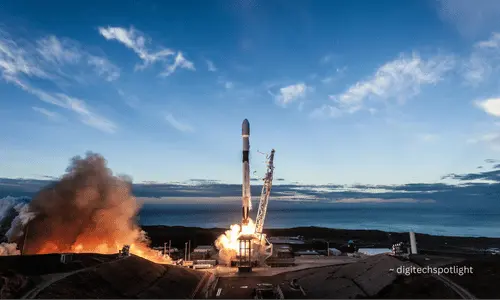The day following The New York Times reported growing environmental issues in and around SpaceX’s Boca Chica Starship Super Heavy testing site, SpaceX issued a strong defense. SpaceX, which was founded by Elon Musk, said that the article contains false information regarding the company’s environmental footprint on the Boca Chica, Texas site.

Resolving Concerns about Wildlife impacts The company in the aerospace industry specifically addressed the allegations about the declining of the threatened species of piping plover in the region. The New York Times report referenced a study from 2021 conducted by Newstead and Hill that claimed to have that there was a decline of 54% in the number of piping plovers until 2021. SpaceX has disputed this assertion by calling the research “outdated and unreliable,” and also highlighting significant weaknesses in the methodology used that included inconsistent timings of field trips and insufficient survey of the habitat.
SpaceX stressed that the number of piping plovers within each location is dependent and influenced by a variety of aspects that do not have anything to do with population size. The company further stated that piping plovers don’t have a nest in Texas and primarily utilize this area to migrate or for wintering.
Reevaluation of environmental Data In addition, SpaceX highlighted a 2022 update report from the same team of researchers. They reviewed the data and discovered there was no change significant in the population of piping plovers in Boca Chica over time. The updated report reflected the declining trend initially by revealing the improve during the last year of the research.
Additionally, SpaceX reported conducting its own monitoring program over the course of nine years with the same protocol that was developed by the US Fish and Wildlife Service. The payoff of the company’s study, which are from consistent daily surveys for the past two years, offer very little evidence of significant trends, whether increasing or decrementing, for any species that is targeted, such as the piping the plovers.
In-Pursuit Engagement and Future Plans SpaceX is getting ready for its fifth and final test flight of the highly-ambitious Starship Super Heavy spacecraft as it seeks to capture huge boosters, and then land the craft safely next time. Even with the concerns about environmental impact SpaceX remains dedicated to its mission of expanding the space industry while also addressing environmental impact.
Conclusion: Balancing Act The controversy over SpaceX’s environmental impacts in Boca Chica highlights the challenges in balancing technology advancement and conservation of the environment. While SpaceX is continuing its ambitious Starship program, continuous monitoring and transparency in report-writing will be vital for addressing environmental concerns as well as making sure that SpaceX’s operations don’t harm the ecosystem in Boca Chica.
FAQs:
Which are your primary environmental concerns surrounding SpaceX’s Boca Chica facility? Most of the concerns concern possible impact it could have on the local wildlife including the endangered populations of piping plovers, as well as general ecological consequences associated with the Starship Super Heavy testing facility.
What has SpaceX addressed these issues? SpaceX has issued an rebuttal to those claims made of the New York Times report misleading. SpaceX highlighted shortcomings in the research and provided information of its own long-term monitoring program that shows no negative trend in the local wildlife population.
What was the report that followed-up by Newstead and Hill uncover? The 2022 follow-up report reviewed the information and discovered no change in the number of piping plovers of Boca Chica, balancing the declining trend initially by a slight improve at the end of the year of the research.
What is the method by which SpaceX assess the environmental impacts of its business? SpaceX conducts a nine-year program of monitoring with an agreement with the US Fish and Wildlife Service which has been conducting daily surveys for the past two years, to monitor the changes in wildlife populations locally.